Abstract
Designing information resources that actually meet the information needs of individuals requires detailed knowledge of these needs. This poses a challenge for developers. Because the meaning of particular terms can vary by field, professional knowledge differs to some extent in different disciplines, and the questions that people ask assume a certain amount of unarticulated background knowledge, understanding the information needs of life scientists is not a trivial undertaking. One source of help in meeting this challenge is ethnography, a set of research methods and an associated conceptual stance developed and used by anthropologists for investigating uncontrolled real-world settings. Drawing on the author's experience in using ethnographic techniques to study clinicians' information needs, this paper describes why such research is necessary, why it requires particular research methods, what an ethnographic perspective has added to the study of information needs, and what this broader approach has revealed about the types of information sought by clinicians in the course of their daily practice.
Full text
PDF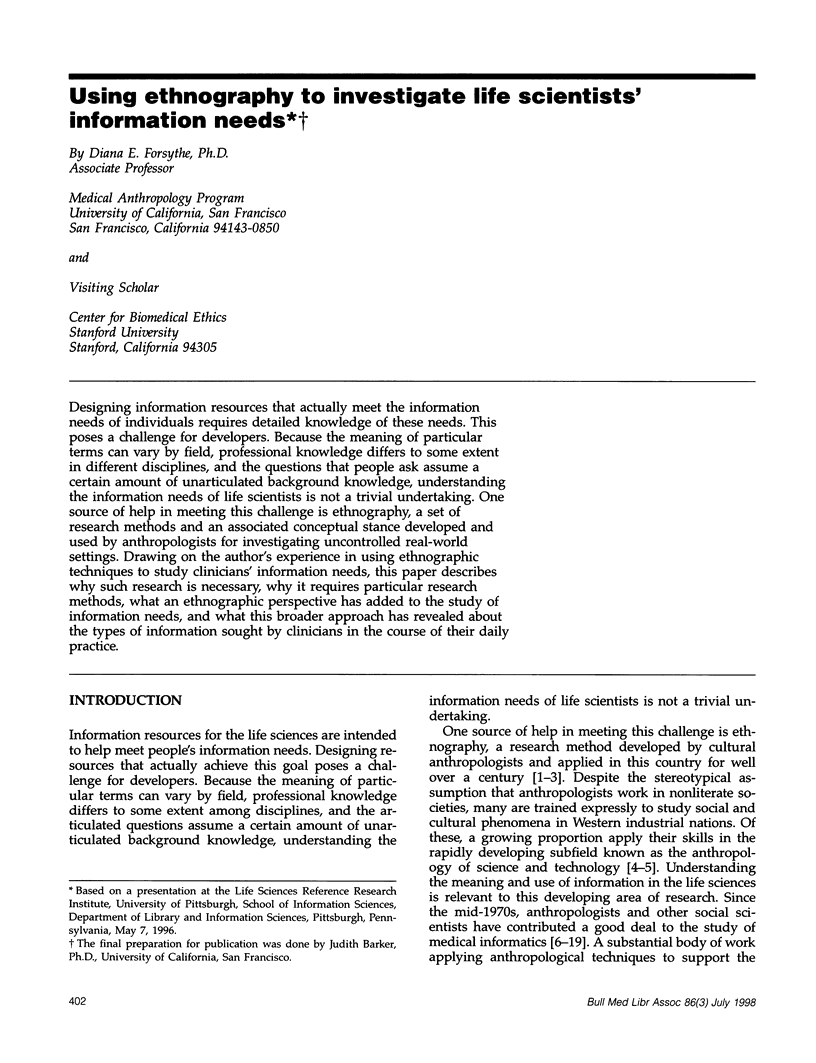
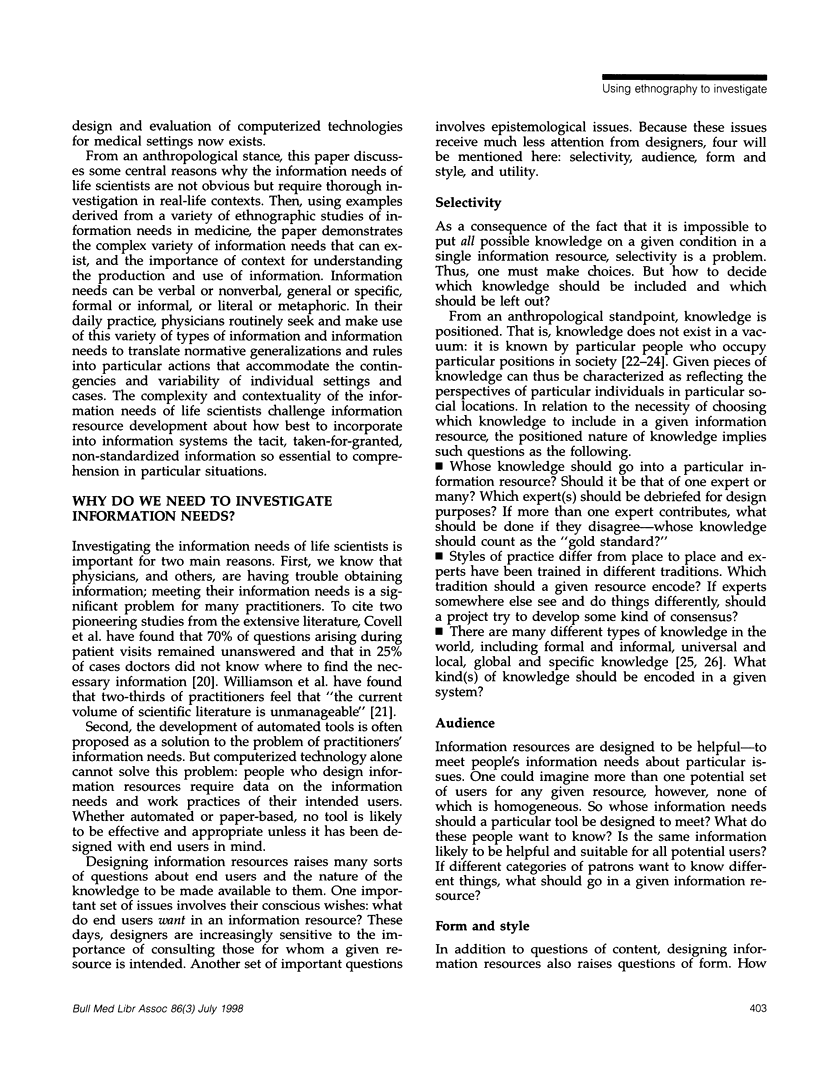
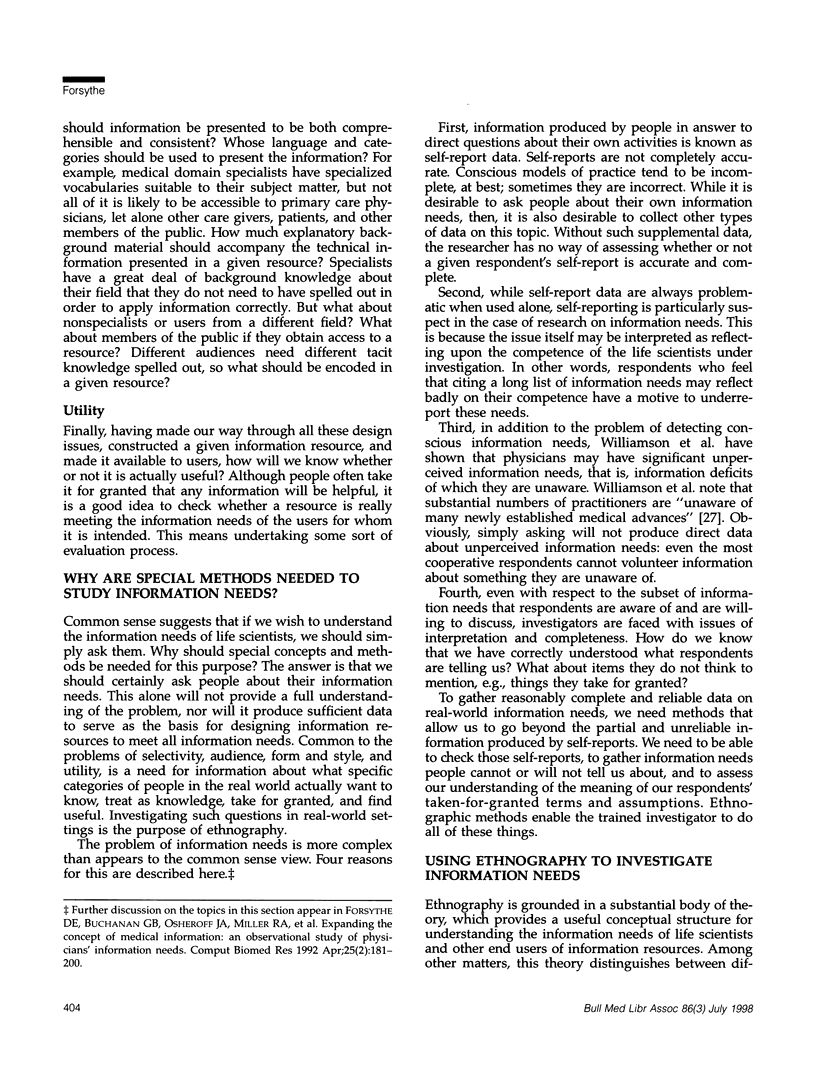
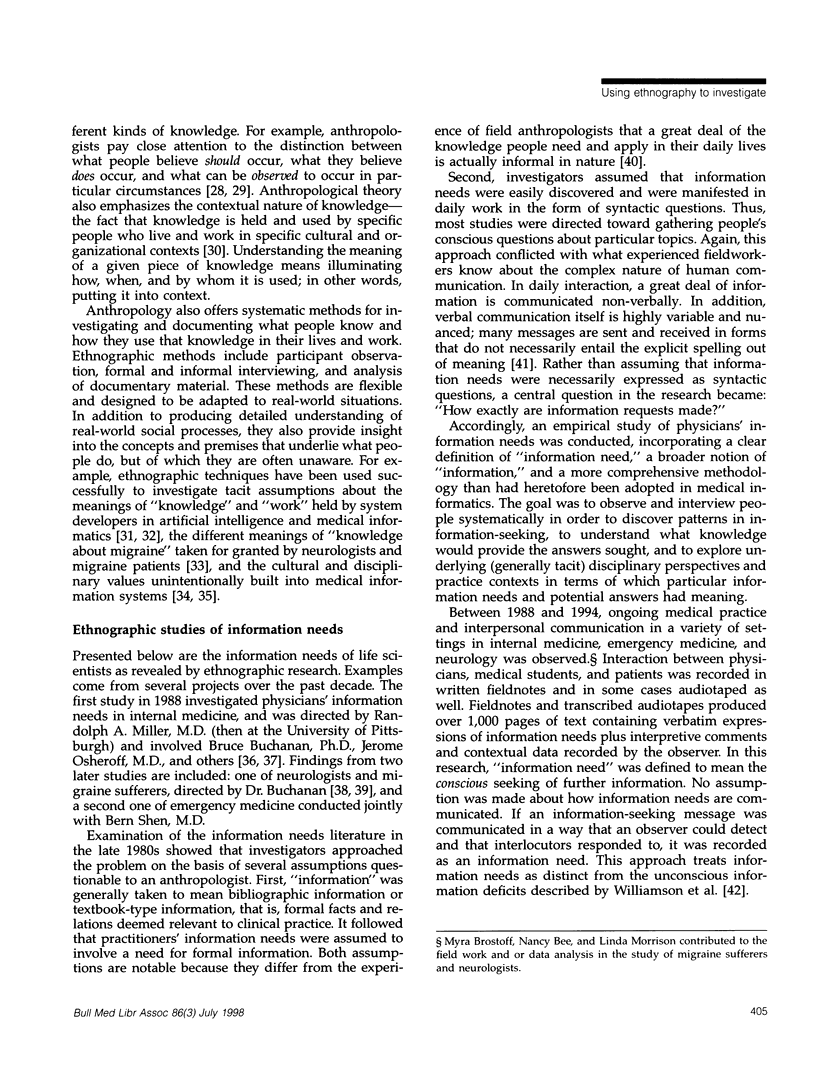
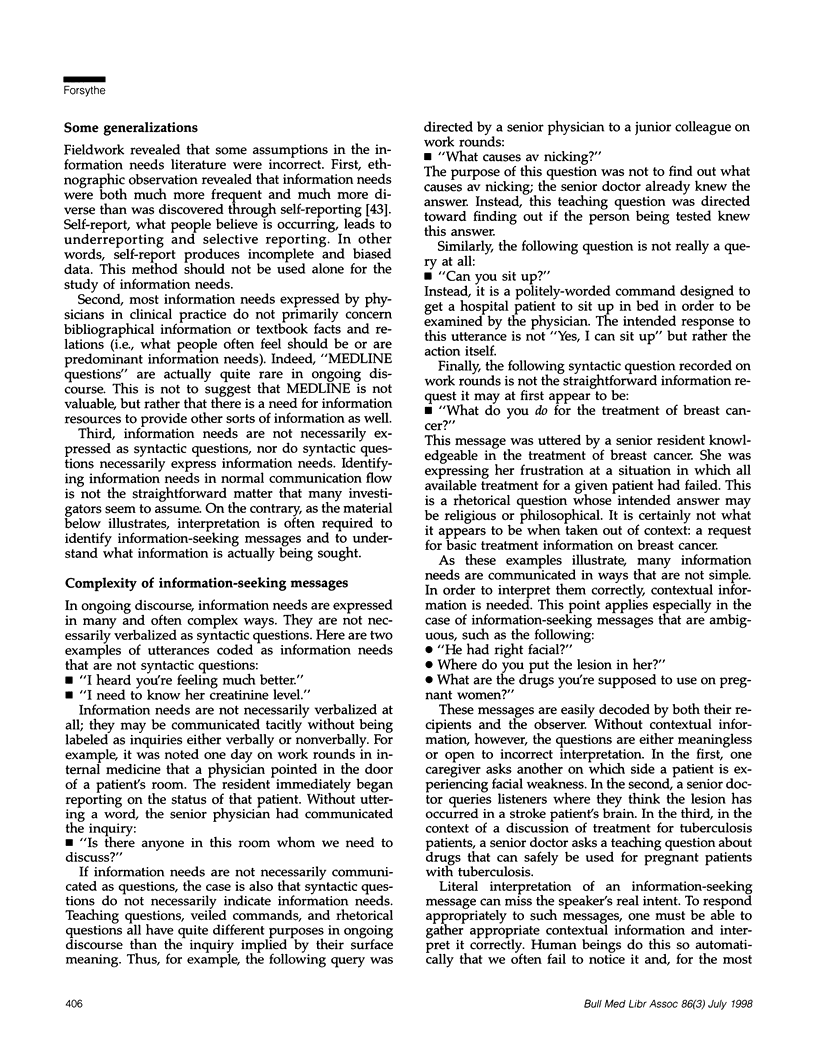
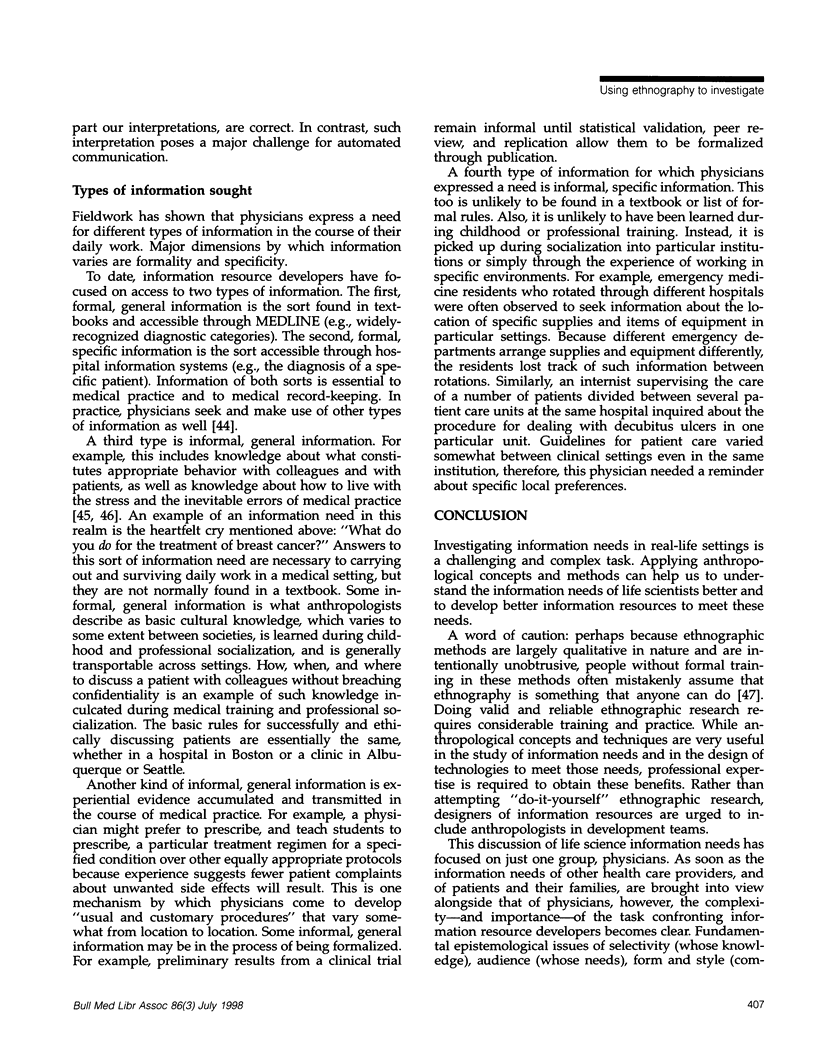
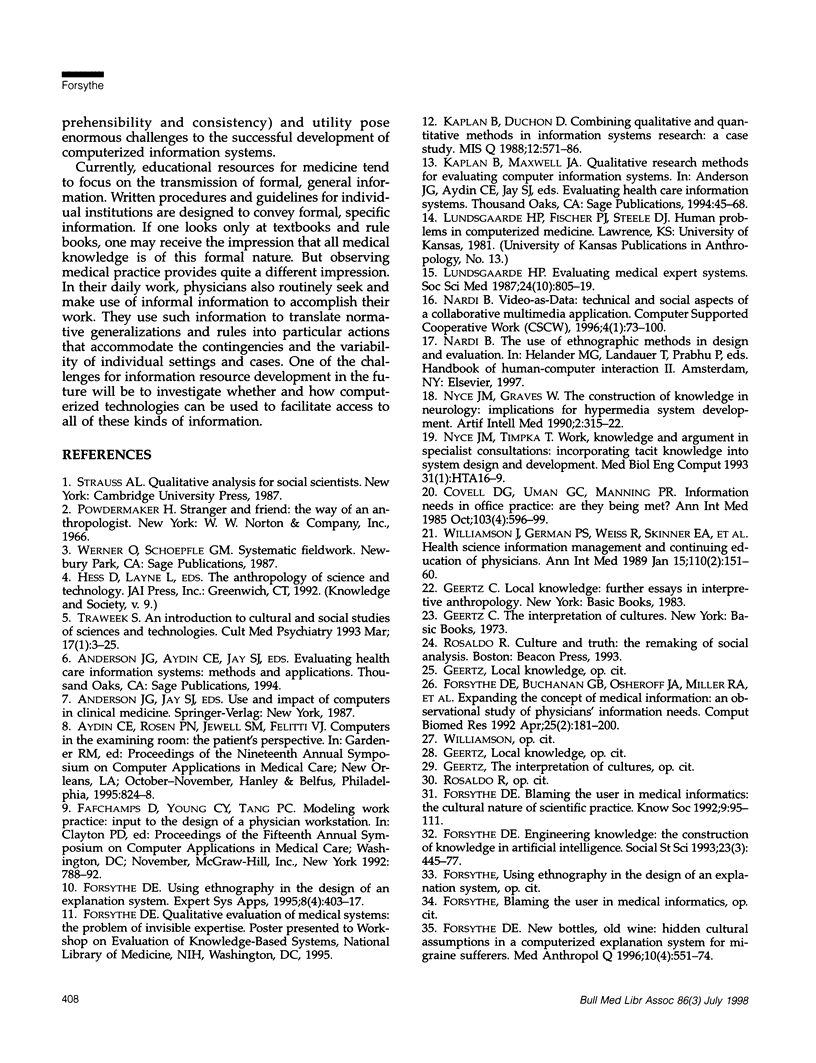
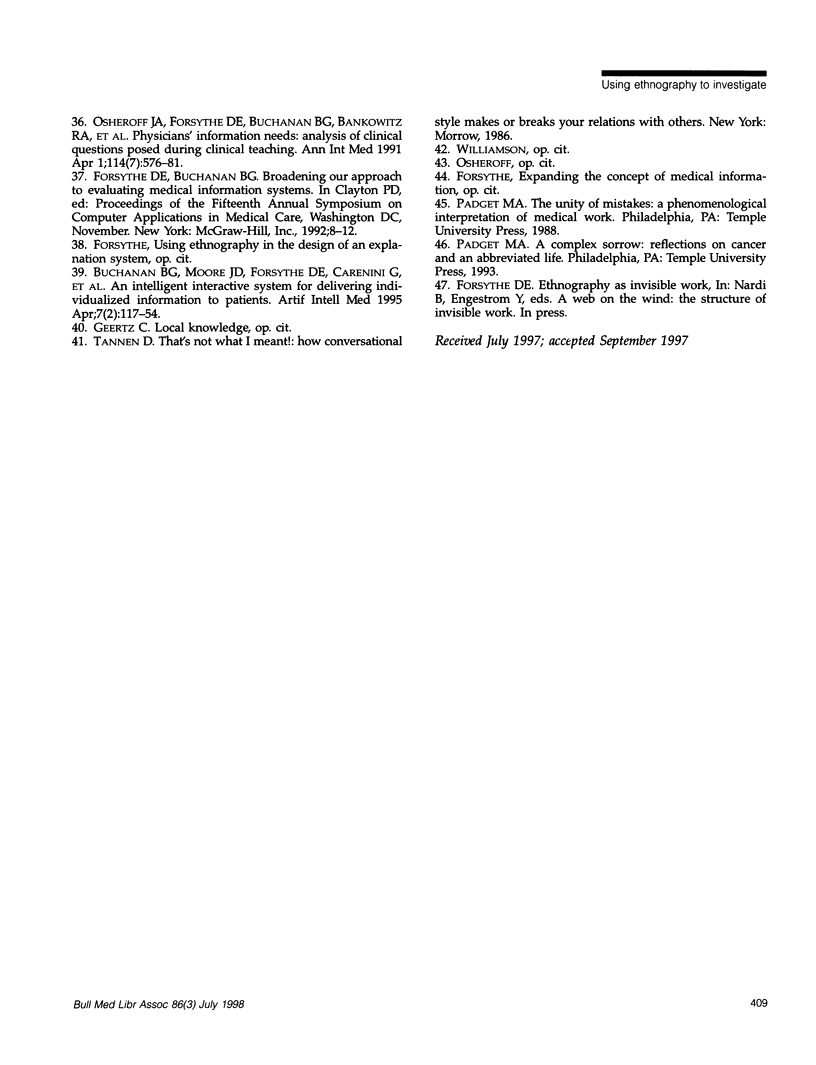
Selected References
These references are in PubMed. This may not be the complete list of references from this article.
- Buchanan B. G., Moore J. D., Forsythe D. E., Carenini G., Ohlsson S., Banks G. An intelligent interactive system for delivering individualized information to patients. Artif Intell Med. 1995 Apr;7(2):117–154. doi: 10.1016/0933-3657(94)00029-r. [DOI] [PubMed] [Google Scholar]
- Covell D. G., Uman G. C., Manning P. R. Information needs in office practice: are they being met? Ann Intern Med. 1985 Oct;103(4):596–599. doi: 10.7326/0003-4819-103-4-596. [DOI] [PubMed] [Google Scholar]
- Forsythe D. E., Buchanan B. G., Osheroff J. A., Miller R. A. Expanding the concept of medical information: an observational study of physicians' information needs. Comput Biomed Res. 1992 Apr;25(2):181–200. doi: 10.1016/0010-4809(92)90020-b. [DOI] [PubMed] [Google Scholar]
- Forsythe D. E. New bottles, old wine: hidden cultural assumptions in a computerized explanation system for migraine sufferers. Med Anthropol Q. 1996 Dec;10(4):551–574. doi: 10.1525/maq.1996.10.4.02a00100. [DOI] [PubMed] [Google Scholar]
- Lundsgaarde H. P. Evaluating medical expert systems. Soc Sci Med. 1987;24(10):805–819. doi: 10.1016/0277-9536(87)90182-1. [DOI] [PubMed] [Google Scholar]
- Osheroff J. A., Forsythe D. E., Buchanan B. G., Bankowitz R. A., Blumenfeld B. H., Miller R. A. Physicians' information needs: analysis of questions posed during clinical teaching. Ann Intern Med. 1991 Apr 1;114(7):576–581. doi: 10.7326/0003-4819-114-7-576. [DOI] [PubMed] [Google Scholar]
- Traweek S. An introduction to cultural and social studies of sciences and technologies. Cult Med Psychiatry. 1993 Mar;17(1):3–25. doi: 10.1007/BF01380596. [DOI] [PubMed] [Google Scholar]
- Williamson J. W., German P. S., Weiss R., Skinner E. A., Bowes F., 3rd Health science information management and continuing education of physicians. A survey of U.S. primary care practitioners and their opinion leaders. Ann Intern Med. 1989 Jan 15;110(2):151–160. doi: 10.7326/0003-4819-110-2-151. [DOI] [PubMed] [Google Scholar]


